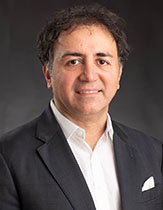
Accurate determinations of tumor extent and the invasion of critical structures are essential for proper staging and management of patients with head and neck cancer, but can at times be challenging. By taking advantage of the strong energy-dependent or spectral properties of iodinated contrast agents used for improving tumor visualization, different dual-energy CT (DECT) reconstructions can be generated to improve tumor visualization and, consequently, accuracy for the determination of the extent and stage of tumors, such as head and neck squamous cell carcinoma (HNSCC). The impetus for our study was to evaluate and determine the optimal reconstructions or virtual monochromatic images (VMIs) for evaluating the neck and HNSCC using a fast kVp switching spectral CT scanner. We performed this quantitatively, using measures of signal-to-noise ratios and tumor contrast, which would in turn provide a guide for the use of VMIs for image interpretation.
In this study, we demonstrated that the best signal-to-noise ratio for evaluating neck tissues in general is achieved on VMIs reconstructed at 65 keV. However, tumor soft-tissue contrast was actually highest on low-energy VMIs reconstructed at 40 keV.
Our study provides the basis for using 40-keV VMIs for evaluating tumor extent, supplemented with the less noisy 65-keV VMIs that are close to images that one is typically accustomed to interpreting when acquiring scans using a single-energy CT system. The general model that has subsequently ensued from this, and from other related studies, is to use different DECT reconstructions for optimally staging a tumor, similar to the use of different sequences when interpreting an MRI.
The results of this study have had a direct impact on the practice at our institution, which is a cancer center. For all neck DECTs, we reconstruct and send 65-keV and 40-keV VMI series to PACS for clinical interpretation. There has also been significant interest from colleagues who have approached us and expressed interest in obtaining our DECT protocols for their practices.
There are currently many studies building upon and expanding on these observations.